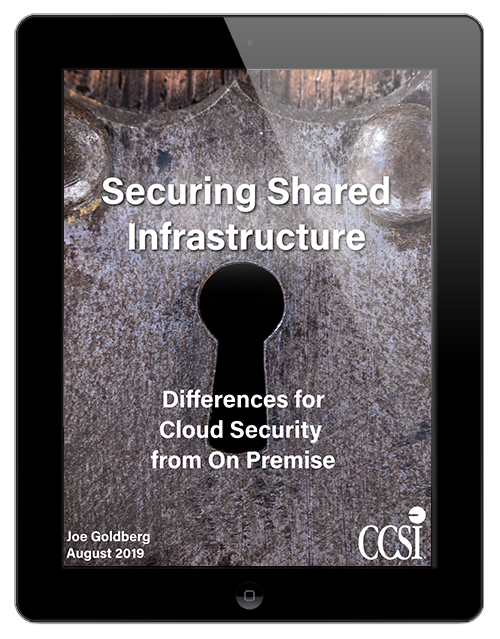Keeping Customer Data Secure in the Cloud: 5 Things to Know
Cloud computing has drastically changed how people store and access data. For example, employees can access the information required to do their work from anywhere, even while on the road.
However, you’re probably keeping customer data in the cloud, too. If so, you have an additional obligation to protect that information. Here are five things to know when accomplishing that:
1. Multifactor Authentication Increases Security
Multifactor authentication (MFA) involves securing access to your cloud with a combination of identifying measures. For example, in addition to entering a password, people may also need to input a code sent to their phone.
Alex Weinert, the group program manager for identity security and protection at Microsoft, said the company’s internal data shows that MFA stops 99.9% of automated attacks on accounts. Consider implementing MFA on cloud-based accounts that hold client information. Doing it is a simple but effective step in boosting security.
2. Encryption Is Essential to Secure Data
Encryption also comes into play when you’re looking for the best ways to secure data in the cloud. First, choose a cloud provider that automatically encrypts the information you upload. It’s also best to encrypt customer data on your end, too, by investing in third-party encryption tools. They can apply encryption and enable password protection. Then, even if hackers get the information, it’s harder for them to use it.
3. Cloud Security Audits Can Help You Learn How to Secure Data Better
Even if your company prioritizes protecting information in the cloud, there are almost certainly some areas for improvement. You can learn about those by undergoing cloud security audits. They’ll highlight what your company is doing well and where shortcomings may exist.
The Cloud Security Alliance recently launched the industry’s first credential for cloud auditing, too. Even if you cannot find someone who received that credential, hire an auditor who is familiar with the best practices for securing cloud data and ready to help you enhance protection for your patrons.
4. The Proper Access Controls Can Limit Cloud Data Misuse
When used well, the client information you collect and store in the cloud can enhance their experiences. First-party or self-reported data is the most reliable kind you can capture because it comprises the details that people give you themselves. Whether the majority of your customer data is first-party or not, you can use it to create consumer profiles, optimize marketing efforts and more.
But, the crucial thing to remember is that access controls should be in place to ensure that the only people who can access the data are those who need it to do their jobs.
According to the 2019 Global Data Risk Report from Varonis, 53% of companies had at least 1,000 sensitive files accessible to everyone, and each person could access an average of 17 million records in total. As mentioned earlier, cloud computing lets authorized users access archives from anywhere. But that doesn’t mean they should.
Spend time putting controls in place so that people can only open or otherwise use information directly relating to their business role. Failing to do that could mean employees have too much freedom to work with cloud-stored files, and the risk of insider misuse or breaches goes up.
5. Regular Training Sessions Can Keep Employees Updated With Cloud Security Best Practices
If you maintain customer data in the cloud, it’s vital to create and uphold a cloud security strategy. It shows that you treat secure data as a top-of-mind concern instead of an afterthought. Employee training should be a component of your efforts, especially since best practices frequently evolve with the cloud landscape.
Encourage workers to ask questions if they have any uncertainties about how to handle customer data kept in the cloud. Distribute printed materials when appropriate so that employees can refer to them and ensure they aren’t missing any steps in your company’s cloud security operations.
Also, make cloud security training a part of your onboarding process. That way, employees understand how important it is to secure client data from the start.
View Securing Customer Data in the Cloud as an Ongoing Goal
Many businesses are gathering ever-increasing amounts of customer data and sending it to the cloud. As that practice continues, cloud security must stay top-priority.
The five tips here will get you off to a strong start, but you should never consider that your business has done all there is concerning security. Strive to find ways to improve at every opportunity. That mindset will help you avoid preventable pitfalls.
Securing Shared Infrastructure
Differences for Cloud Security from on Premise
Cloud computing is different from traditional on premise IT. The cloud is a shared infrastructure and when using shared infrastructures, organizations do not control much of the technology that underlies the cloud services they engage, especially networking. Shared infrastructures have their own security considerations that should be assessed before embracing the cloud.
Author Bio: Kayla Matthews is a technology journalist and cybersecurity writer whose work has been featured on InformationWeek, Security Boulevard, Toolbox and IoT Times. To read more from Kayla, please visit her blog, Productivity Bytes.
Kayla is a guest blogger. All opinions are her own.
The post Keeping Customer Data Secure in the Cloud: 5 Things to Know appeared first on CCSI.
*** This is a Security Bloggers Network syndicated blog from CCSI authored by Guest Author. Read the original post at: https://www.ccsinet.com/blog/customer_data_secure_cloud/





